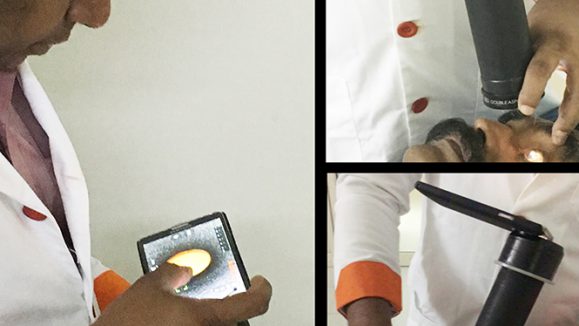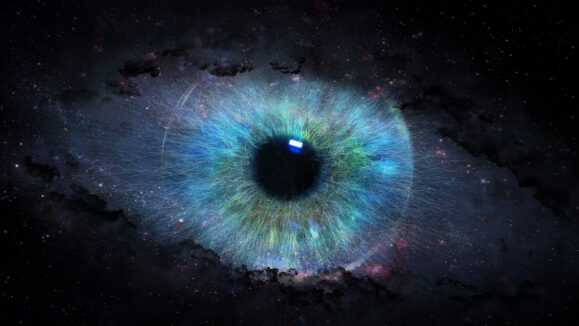For many parents, learning that their child has a genetic disorder that causes progressive loss in one or more of the five senses would be their worst nightmare. Usher syndrome is one such nightmare – a rare and inherited genetic recessive condition that leads to both progressive vision and hearing loss.
Usher syndrome is the most common genetic disorder that affects both hearing and vision – in developed countries, it occurs in about four in every 100,000 births. Approximately three to six percent of children who are deaf and three to six percent who are hard-of-hearing have Usher syndrome.
Vision loss has been tied to retinitis pigmentosa (RP), which manifests through the breakdown and loss of light-sensitive retinal cells called photoreceptors that convert light into electrical signals that are then processed into the images we see. The loss of photoreceptors initially leads to poor night vision and loss of peripheral vision, but ultimately will result in total loss of vision.
The condition is classified into three types (1, 2 and 3) based on the hearing and vestibular symptoms observed in patients and onset of symptoms. Sixteen loci have been reported to be involved in Usher syndrome.
Usher syndrome type 1 accounts for about 30 to 40 percent of total Usher syndrome cases. It’s characterized by profound congenital deafness and vestibular dysfunction with visual impairment manifesting before the child reaches 10-years-old. From birth, many children with syndrome display severe hearing loss and experience balance problems as a consequence.
The first signs of RP – night blindness and loss of peripheral vision – usually appear early in life, at or before early adolescence. For instance, in a case study1 led by Dr. Radka Kremlikova Pourova, a 4-year-old Czech girl diagnosed with hearing loss during newborn screening underwent broad genetic screening and a comprehensive ophthalmic examination to identify the underlying genetic disorder causing her symptoms.
The team of scientists and medical doctors used spectral-domain optical coherence tomography (SD-OCT), utilizing the in vivo high-resolution imaging to assess the ocular health of the young patient’s eyes. The ocular findings pointed to a loss of photoreceptors and slight reduction in total retinal thickness that correlated with the loss of visual acuity and emergence of RP. Genetic profiling also revealed pathogenic sequence mutations in two genes (MYO7A and USH2A) associated with Usher syndrome.
Another related study2 was recently conducted by researchers at the Scheie Eye Institute at the University of Pennsylvania. Macular scans of 16 individuals with Usher syndrome were analyzed with SD-OCT – and like the study reported by Dr. Kremlikova Pourova, the findings indicated a loss of photoreceptors in patients’ eyes that ultimately manifested itself as visual acuity loss and early signs of RP.
This accumulated evidence has built a strong case for using SD-OCT as a diagnostic tool to analyze the macular health in patients suffering from rare genetic diseases that result in the progressive degeneration of visual acuity and RP, such as in the case of the Usher syndrome.
“When monitoring functions such as visual acuity, visual fields and electroretinography have been traditional ways of following the progression of inherited retinal degenerations. Scientists have recently looked into morphologic features such as photoreceptor integrity,” explained Dr. Igor Kozak, clinical lead, Moorfields Eye Hospital Centre, Abu Dhabi, United Arab Emirates.
Delineating areas of photoreceptor damage using SD-OCT, or even quantification of cellular loss using adaptive optics technology, are attractive approaches to supplement functional monitoring.3
“SD-OCT has become a standard imaging modality in diseases of the outer retina,” said Dr. Kozak. Visualizing structures like the external limiting membrane, inner/outer photoreceptor segments, ellipsoid zone and Bruch’s membrane and then associating their changes with visual acuity are frequent clinical correlations in common diseases such as age-related macular degeneration, central serous chorioretinopathy or diabetic macular edema. In recent years, scientists have been collecting more information on using SD-OCT technology in inherited retinal diseases with subsequent imaging-to-phenotype correlations.4
Retinal imaging, including earlier generation of optical coherence tomography technology, has been employed in studying Usher sundrome.5,6 SD-OCT, alone or in combination with other technologies, has been used to stage and monitor the progression of Usher syndrome.2,7
“Usher syndrome is a debilitating disease that is clinically and genetically a very heterogeneous group. It is the leading genetic cause of combined vision and hearing loss,” added Dr. Kozak.
These technologies can detect subtle structural changes before the classic clinical picture develops. It has been also reported that cone density in Usher syndrome could be reduced by nearly 38 percent from normal, before best corrected visual acuity declines to clinically abnormal ranges (20/25 or less).7
“This places SD-OCT ahead of some functional tests, like visual field testing, for detection of early changes due to inherited retinal degenerations,” said Dr. Kozak.
Therefore, SD-OCT could be used to monitor the progression of the phenotypic symptoms and diagnose diseases like Usher syndrome type 1, long before the child becomes symptomatic or before visual acuity begins to deteriorate. Early diagnosis would allow time to adjust the child’s environment and develop special educational plans to ease the transition into life with progressive degenerative visual acuity. Furthermore, with the fast-paced development of new technology, early diagnosis may also present opportunities for earlier treatment and thus, greater preservation of visual acuity in the future.
References:
1 Kremlikova Pourova R, Paderova J, Copikova J, et al. SD-OCT imaging as a valuable tool to support molecular genetic diagnostics of Usher syndrome type 1. J AAPOS. 2018;S1091-8531(17)30871-6. [Epub ahead of print]
2 Sumaroka A, Matsui R, Cideciyan AV, et al. Outer Retinal Changes Including the Ellipsoid Zone Band in Usher Syndrome 1B due to MYO7A Mutations. Invest Ophthalmol Vis Sci. 2016;1;57(9):OCT253-61.
3 Kozak I. Retinal imaging using adaptive optics technology. Saudi J Ophthalmol 2014;28(2):117-122.
4 Murthy RK, Haji S, Sambhav K, Grover S, Chalam KV. Clinical applications of spectral domain optical coherence tomography in retinal diseases. Biomed J. 2016;39(2):107-120.
5 Jacobson SG, Aleman TS, Sumaroka A, et al. Disease boundaries in the retina of patients with Usher syndrome caused by MYO7A gene mutations. Invest Ophthalmol Vis Sci. 2009; 50: 1886–1894.
6 Fakin A, Jarc-Vidmar M, Glavac D, et al. Fundus autofluorescence and optical coherence tomography in relation to visual function in Usher syndrome type 1 and 2. Vis Res. 2012;75:60–70. 7 Sun LW, Johnson RD, Langlo CS, et al. Assessing photoreceptor structure in retinitis pigmentosa and Usher syndrome. Invest Ophthalmol Vis Sci 2016;57(6):2428-2442.



